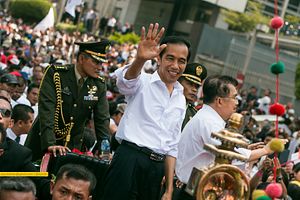Late last month, Indonesia officially announced the launch of a new tank landing ship in a ceremony attended by top officials and representatives. The scheduled event marked an advance within one of several platforms that Indonesia is building out as part of its wider military modernization effort, despite the continued challenges that remain on this front for the Southeast Asian state.
As I have noted before in these pages, Indonesia has long been engaged in an effort to strengthen the country’s maritime capabilities to address a wide range of domestic and foreign challenges, in recognition of the sobering reality that it still finds it difficult to accomplish even basic tasks such as monitoring and securing what is the world’s second longest coastline. Jakarta also wants to boost the country’s nascent but growing domestic defense industry as well as it builds up its capabilities, which only compounds that challenge (See: “An Indonesian Defense Revolution Under Jokowi?”).
Part of that development has included tank landing ships (LST) for the Indonesian Navy (TNI-AL). Though Indonesia already has such ships in service, including the KRI Teluk Bintuni which carries the army’s Leopard main battle tanks, there have been efforts underway to build more as well. The initial plan had been for 12 new LST vessels ordered in batches over time.
On June 28, Indonesia officially announced the launch of a new tank landing ship in the latest development in the development of the LSTs. Indonesian shipbuilder PT Daya Radar Utama (DRU) launched the vessel at the company’s facilities in Bandar Lampung in Sumatra in a development that was widely reported in local media outlets.
The KRI Teluk Lada, which measures 117 meters long, 16.4 meters wide and 7.8 meters in height, boasts a top speed of 16 knots and a range of 6,240 nautical miles. It has been designed to carry not only tanks, but also helicopters along with their crew and hundreds of supporting troops.
The vessel’s launch was witnessed by several top Indonesian officials including Chief of Staff Admiral Siwi Sukma Adji and Indonesian Defense Minister Ryamizard Ryacudu. In his remarks at the launch, Ryacudu cast the development as a source of pride for the Indonesian Navy, the military, and the country more generally.
At the same time, as he has been doing in other such occasions, Ryacudu also reinforced the need for the proper maintenance of the vessel and for accountability to the Indonesian people. As I have noted before in these pages, though these factors are often missed in headlines about new capabilities, they nonetheless are major challenges for the future of Indonesia’s defense modernization efforts.

































